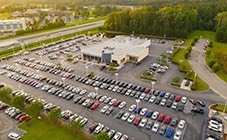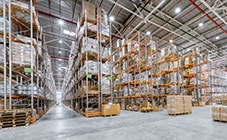
Succession planning

Should a family business always remain within the family? Not always. Learn more about options for transitioning a business.
Commercial Auto

As the auto market evolves, franchise dealers tap bank expertise, technology to maximize profits and efficiency
Equipment financing

Purchase, loan, or lease? Considerations when acquiring new equipment.
Equipment financing

The lease advantage. Why leasing is a smart choice in today’s economy.
Equipment financing

Gain a business edge with equipment leasing
Why leasing equipment is a smart move in today’s economy.
Sustainability

E-commerce supply chain: will you be required to disclose your emissions next year?
Sustainability

U.S.-based companies with customers or operations in Europe may be subject to new mandatory sustainability.
Equipment financing

Need to optimize liquidity? Consider equipment financing
Derek Coe, Equipment Finance Sales Manager, Wells Fargo shares how companies are monetizing fixed assets to preserve working capital.
Healthcare

Array: Transformative mental healthcare
Array Behavioral is changing the way hospitals manage urgent mental care patients in Emergency Rooms across the nation.
Government banking

Governments and banks: A consultative partnership
Karekin Johnson, Relationship Manager, Government Banking shares insights on consultative banking.
Channel finance

Changing sales and supply patterns make strong liquidity management crucial for IT resellers
Daniel Pfeiffer, Managing Director, Wells Fargo Channel Finance shares how success requires a proactive approach to credit, cash flow, and working capital.
Sustainability

Mapping the electric highway
John Crum, National Sales Manager, Equipment Finance shares best practices companies should keep in mind when transitioning their truck fleets from gas to electric.
Sustainability

Recharging the daily commute
WeDriveU provides commuter buses for some of Silicon Valley’s and the nation’s biggest companies.
Diversity & inclusion

Tribal Economic Report
Wells Fargo and the Boston Consulting Group highlight the wealth of economic opportunities in Native Communities.
Diversity & inclusion

Increasing resiliency in Indian Country
Dawson Her Many Horses, head of Native American Banking, shares his insights on creating new economic opportunities in tribal communities.
Retail financing

More retailers embracing recommerce
Adam B. Davis, Managing Director, Capital Finance-Retail Finance Division shares how recommerce represents an opportunity to connect with more buyers to grow sales thoughtfully and responsibly.
Healthcare


 Sign On
Sign On 

